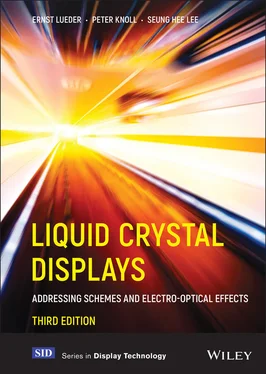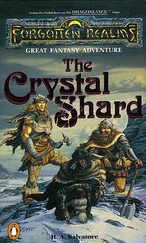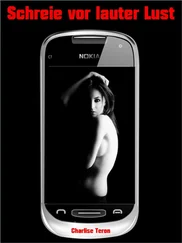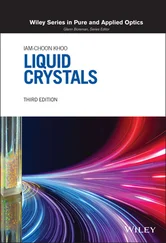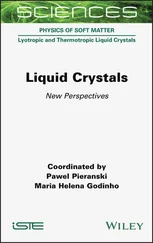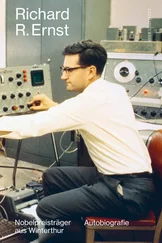Ernst Lueder - Liquid Crystal Displays
Здесь есть возможность читать онлайн «Ernst Lueder - Liquid Crystal Displays» — ознакомительный отрывок электронной книги совершенно бесплатно, а после прочтения отрывка купить полную версию. В некоторых случаях можно слушать аудио, скачать через торрент в формате fb2 и присутствует краткое содержание. Жанр: unrecognised, на английском языке. Описание произведения, (предисловие) а так же отзывы посетителей доступны на портале библиотеки ЛибКат.
- Название:Liquid Crystal Displays
- Автор:
- Жанр:
- Год:неизвестен
- ISBN:нет данных
- Рейтинг книги:4 / 5. Голосов: 1
-
Избранное:Добавить в избранное
- Отзывы:
-
Ваша оценка:
- 80
- 1
- 2
- 3
- 4
- 5
Liquid Crystal Displays: краткое содержание, описание и аннотация
Предлагаем к чтению аннотацию, описание, краткое содержание или предисловие (зависит от того, что написал сам автор книги «Liquid Crystal Displays»). Если вы не нашли необходимую информацию о книге — напишите в комментариях, мы постараемся отыскать её.
THE NEW EDITION OF THE GOLD-STANDARD IN TEACHING AND REFERENCING THE FUNDAMENTALS OF LCD TECHNOLOGIES
Liquid Crystal Displays — читать онлайн ознакомительный отрывок
Ниже представлен текст книги, разбитый по страницам. Система сохранения места последней прочитанной страницы, позволяет с удобством читать онлайн бесплатно книгу «Liquid Crystal Displays», без необходимости каждый раз заново искать на чём Вы остановились. Поставьте закладку, и сможете в любой момент перейти на страницу, на которой закончили чтение.
Интервал:
Закладка:
Table of Contents
1 Cover
2 Series Page
3 Title Page
4 Copyright Page
5 Dedication Page
6 Foreword
7 Preface to the Third Edition
8 Preface to the Second Edition
9 Preface to the First Edition
10 About the Authors
11 1 Introduction
12 2 Liquid Crystal Materials and Liquid Crystal Cells2.1 Properties of Liquid Crystals 2.2 The Operation of a Twisted Nematic LCD References
13 3 Electro-optic Effects in Untwisted Nematic Liquid Crystals3.1 The Planar and Harmonic Wave of Light 3.2 Propagation of Polarized Light in Birefringent Untwisted Nematic Liquid Crystal Cells References
14 4 Electro-optic Effects in Twisted Nematic Liquid Crystals4.1 The Propagation of Polarized Light in Twisted Nematic Liquid Crystal Cells 4.2 The Various Types of TN Cells 4.3 Electronically Controlled Birefringence for the Generation of Colour References
15 5 Descriptions of Polarization 5.1 The Characterizations of Polarization 5.2 A Differential Equation for the Propagation of Polarized Light through Anisotropic Media 5.3 Special Cases for Propagation of Light References
16 6 Propagation of Light with an Arbitrary Incident Angle through Anisotropic Media6.1 Basic Equations for the Propagation of Light 6.2 Enhancement of the Performance of LC Cells 6.3 Electro-optic Effects with Wide Viewing Angle 6.4 Multidomain VA Cells, Especially for TV 6.5 Polarizers with Increased Luminous Output 6.6 Two Non-birefringent Foils References
17 7 Modified Nematic Liquid Crystal Displays 7.1 Polymer Dispersed LCDs (PDLCDs) 7.2 Guest-Host Displays References
18 8 Bistable Liquid Crystal Displays 8.1 Ferroelectric Liquid Crystal Displays (FLCDs) 8.2 Chiral Nematic Liquid Crystal Displays 8.3 Bistable Nematic Liquid Crystal Displays References
19 9 Continuously Light Modulating Ferroelectric Displays 9.1 Deformed Helix Ferroelectric Devices 9.2 Antiferroelectric LCDs References
20 10 Addressing Schemes for Liquid Crystal Displays References
21 11 Direct Addressing
22 12 Passive Matrix Addressing of TN Displays12.1 The Basic Addressing Scheme and the Law of Alt and Pleshko 12.2 Implementation of PM Addressing 12.3 Multiple Line Addressing 12.4 Two Frequency Driving of PMLCDs References
23 13 Passive Matrix Addressing of Bistable Displays 13.1 Addressing of Ferroelectric LCDs 13.2 Addressing of Chiral Nematic Liquid Crystal Displays References
24 14 Addressing of Liquid Crystal Displays with a-Si Thin Film Transistors (a-Si-TFTs) 14.1 Properties of a-Si Thin Film Transistors 14.2 Static Operation of TFTs in an LCD 14.3 The Dynamics of Switching by TFTs 14.4 Bias-Temperature Stress Test of TFTs 14.5 Drivers for AMLCDs 14.6 The Entire Addressing System 14.7 Layouts of Pixels with TFT Switches 14.8 Fabrication Processes of a-Si TFTs 14.9 Addressing of VA Displays 14.10 Motion Blur 14.11 The Optical Response of a VA Cell 14.12 Reduction of the Optical Response Time by a Special Addressing Waveform References
25 15 Addressing of LCDs with Poly-Si TFTs 15.1 Fabrication Steps for Top-Gate and Bottom-Gate Poly-Si TFTs 15.2 Laser Crystallization by Scanning or Large Area Anneal 15.3 Lightly Doped Drains for Poly-Si TFTs 15.4 The Kink Effect and its Suppression 15.5 Circuits with Poly-Si TFTs References
26 16 Liquid Crystal on Silicon Displays 16.1 Fabrication of LCOS with DRAM-Type Analog Addressing 16.2 SRAM-Type Digital Addressing of LCOS 16.3 Microdisplays Using LCOS Technology References
27 17 Addressing of Liquid Crystal Displays with Metal-Insulator-Metal Pixel Switches References
28 18 Addressing of LCDs with Two-Terminal Devices and Optical, Plasma, Laser and e-beam Techniques References
29 19 Components of LCD Cells 19.1 Additive Colours Generated by Absorptive Photosensitive Pigmented Colour Filters 19.2 Additive and Subtractive Colours Generated by Reflective Dichroic Colour Filters 19.3 Colour Generation by Three Stacked Displays 19.4 LED Backlights 19.5 Cell Assembly References
30 20 Projectors with Liquid Crystal Light Valves 20.1 Single Transmissive Light Valve Systems 20.2 Systems with Three Light Valves 20.3 Projectors with Two LC Light Valves 20.4 A Rear Projector with One or Three Light Valves 20.5 A Projector with Three Optically Addressed Light Valves References
31 21 Liquid Crystal Displays with Plastic Substrates21.1 Advantages of Plastic Substrates 21.2 Plastic Substrates and their Properties 21.3 Barrier Layers for Plastic Substrates 21.4 Thermo-Mechanical Problems with Plastics 21.5 Fabrication of TFTs and MIMs at Low Process Temperatures 21.6 Transfer of High Temperature Fabricated AMLCDs to a Flexible Substrate References
32 22 Printing of Layers for LC Cells 22.1 Printing Technologies 22.2 Surface Properties for Printing 22.3 Printing of Components for Displays 22.4 Cell Building by Lamination References
33 23 Advances of TFTs and Structures for Enhancing Mobility23.1 Physical Properties of Oxide Semiconductors 23.2 Mobility and Other Performance Criteria of TFTs 23.3 Materials and Structures for the Fabrication of Oxide TFTs 23.4 Printing of TFTs 23.5 Flexible Displays 23.6 Organic TFTs 23.7 LC Materials with a Short Switching Time References
34 24 Fringe-Field Switching (FFS) Technologies24.1 Evolution of LC Technologies in TFT-LCDs 24.2 Fundamentals of the FFS Mode 24.3 Pixel Structure of the FFS Mode References
35 25 Automotive Applications of Liquid Crystal Displays25.1 Introduction 25.2 Communication Zones in the Vehicle 25.3 The Early Beginnings of Instrumentation 25.4 Overview and Display Solutions over Time 25.5 Display Technologies for Driver Information Systems 25.6 Fusion of the Instrument Cluster with the Centre Console Display Unit 25.7 Head-up Displays 25.8 Nomadic Devices 25.9 HMI for Vehicles References
36 Appendix 1: Formats of Flat Panel Displays
37 Appendix 2: Optical Units of Displays
38 Appendix 3: Properties of Polarized Light
39 Index
40 End User License Agreement
List of Tables
1 Chapter 2 Table 2.1 Properties of liquid crystal materials Table 2.2 Properties of nematic LC materials with a wide temperature range
2 Chapter 5 Table 5.1 Various representations of the state of polarization
3 Chapter 14Table 14.1
4 Chapter 19Table 19.1 Characteristics of the white LED in Figure 19.19Table 19.2 Characteristics with shifted λ dvalues from those in Table 19.1Table 19.3 Comparison of data between a BLU without and with cone-shaped lensTable 19.4 Grating data and expected efficiencies
5 Chapter 21Table 21.1 Requirements of plastic substrates for LCDsTable 21.2 Properties of three plastic substrates
6 Chapter 22Table 22.1 Data of test liquidsTable 22.2 Comparison of wetting angles before and after surface cleaning with plasma and UV–ozoneTable 22.3 Free surface energies and wetting angles of various materials in the saturated stateTable 22.4 Free surface energy γ s and wetting angles of the same materials as in Table 22.3 right after UV–ozone cleaningTable 22.5 Surface tension γ sand parameter S of the solventsTable 22.6 Vapour pressure of some solventsTable 22.7 Surface energy γ safter various surface treatments and wetting angle after fluorinationTable 22.8 Fabrication condition of the OTFT array. This table was reproduced from Yase, K. et al., SID 09 , p. 200 with permission by The Society for Information Display
7 Chapter 23Table 23.1 t 0(in ms) for varying values of ε ||and ε ┴( d = 3.5 μm)
List of Figures
1 Chapter 2 Figure 2.1 (a) Rod-like or calamitic liquid crystal molecule with director n ; (b) disc-like or discotic liquid crystal molecules Figure 2.2 Phases of LC materials versus temperature Figure 2.3 Top view of (a) the close packed hexagonal structure of the smectic
Читать дальшеИнтервал:
Закладка:
Похожие книги на «Liquid Crystal Displays»
Представляем Вашему вниманию похожие книги на «Liquid Crystal Displays» списком для выбора. Мы отобрали схожую по названию и смыслу литературу в надежде предоставить читателям больше вариантов отыскать новые, интересные, ещё непрочитанные произведения.
Обсуждение, отзывы о книге «Liquid Crystal Displays» и просто собственные мнения читателей. Оставьте ваши комментарии, напишите, что Вы думаете о произведении, его смысле или главных героях. Укажите что конкретно понравилось, а что нет, и почему Вы так считаете.
